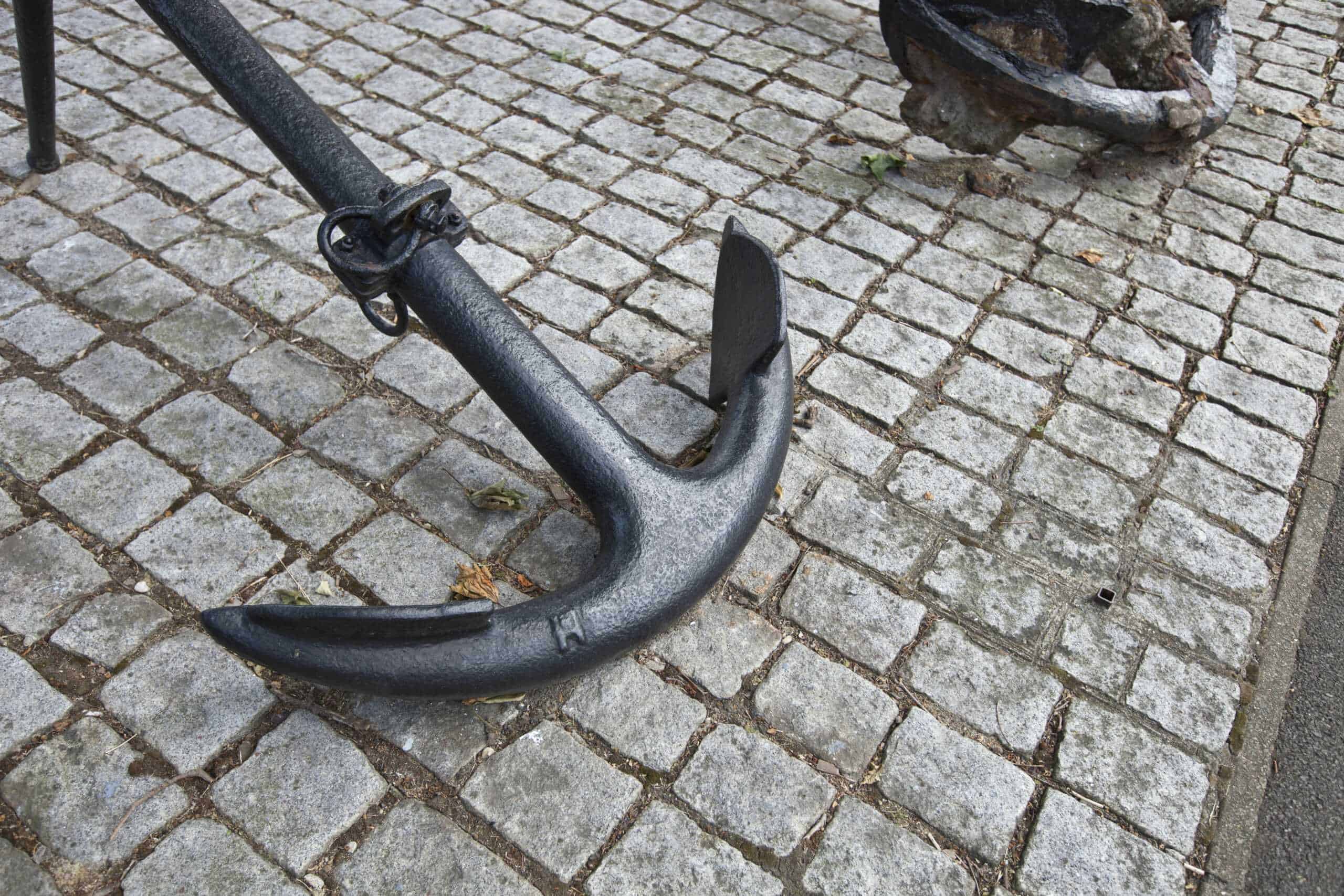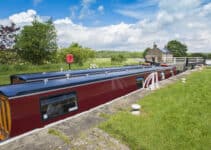Welcome back to CanalBoatUK, today I want to talk about narrowboats and anchors…..what are they? Do you need them? Which one is the best to buy? If you have ever wondered about anchors on your narrowboat, please read on 🙂
What is an Anchor?
An anchor is pretty much the most used imagery for anything marine related 🙂 But it is also a piece of important boating equipment that stops your boat floating adrift!

To get all technical, an anchor is a weighted object attached to a rope or cable that is used to secure a boat to the bottom of the sea. Anchors typically have barbed ends to dig into the seabed and stop any movement happening.
Does a Narrowboat Need an Anchor?
Now that you know what an anchor is, the question is does a narrowboat or canal boat need one? For most situations, the answer is no.
Anchors are usually used at sea, where there are strong currents and tides that will move your boat around violently if they have a chance. However, most canals have very little current, so your narrowboat only has to deal with mild movement pressure.
Also, the ocean is a vast expanse of water but a canal is a long and thin affair 🙂 A loose narrowboat won’t go that far on a canal, certainly when compared to open waters.
Therefore, the current thinking is that all you need to do for a narrowboat on the canal is to moor it next to the tow path, making sure to securely moor your boat with mooring pins or permanent bollards on the tow path.
Beware of Rivers
Whilst navigating the British Canal network, you will probably have to boat along rivers from time to time. Some of the bigger and wider rivers can have strong currents, especially when they are close to the sea.
Therefore, it is recommended that if you want to take your narrowboat or canal boat onto a river you should have an anchor on board.
This anchor won’t be used for mooring up, but more to provide an emergency stop for your boat. If you find it is getting out of control on a river, you can simply drop your anchor and problem solved. This is also handy if you have engine failure on a river with a strong current, providing you a way to prevent your boat drifting out of control.
What Type of Anchor Should I Buy?
The type of anchor pictured above is the one that everyone always pictures when they think of anchors! However, these are more for larger ships out at sea. For narrowboats and canal boats, we want something smaller that can still grip onto the mud and silt at the bottom of most British rivers and canals.
The anchor of choice for most narrowboaters is what is called the Danforth anchor. Below is an example of a Danforth anchor kit I found over at Amazon. Click the image to go view the latest details of this anchor for yourself.

The anchor above is 5 kilograms in weight, if you need something heavier you can check out this Danforth anchor below, again click the image to view it on Amazon.

Another popular type of anchor is the Fortress Marine Anchors. These are typically slightly lighter anchors that are easier to stow and deploy on a narrowboat. If you look at the listing below over at Amazon (by clicking on the image) you will see they even have a handy chart telling you which weight anchor to get for the different lengths of boats.

Anything Else to Consider?
Make sure to secure your Danforth anchor to your boat with a rope/ chain combination which is at least 5 times the depth of the water you are traveling in. This is because a Danforth anchor needs a shallow angle to work best.
You would use a chain/ rope or line combo. Attach the chain end to the anchor as the extra weight will help it set itself in the river or canal bed.
In terms of weight, the common wisdom is to buy the heaviest anchor that you can manually deploy and recover by hand. This is because most canal boats don’t have electric winches for their anchors like their bigger sea faring brothers 🙂
For the average narrowboat of just over 50 foot, a 20 kilogram Danforth anchor would do just fine.



![What Happened to Cruising The Cut [Narrowboat Youtuber]](https://canalboatuk.com/wp-content/uploads/2022/08/cruising-the-cut-youtube-channel-211x150.png)
